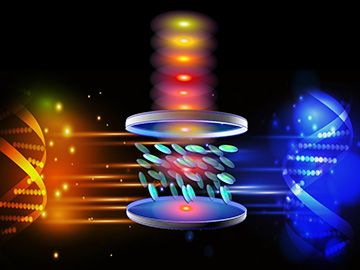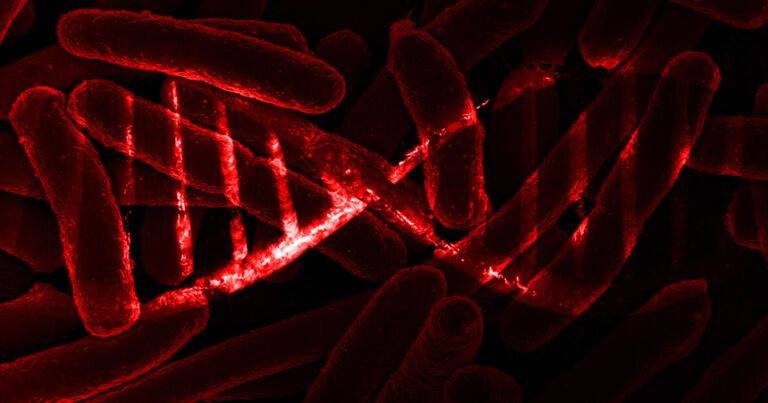AI — Artificial Intelligence, lots of potential for good, but also a threat to the world.
From biological machines to superintelligence.

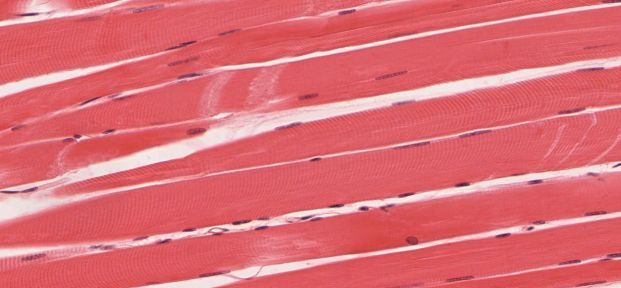
The older we grow, the weaker our muscles get, riddling old age with frailty and physical disability. But this doesn’t only affect the individual, it also creates a significant burden on public healthcare. And yet, research efforts into the biological processes and biomarkers that define muscle aging have not yet defined the underlying causes.
Now, a team of scientists from lab of Johan Auwerx at EPFL’s School of Life Sciences looked at the issue through a different angle: the similarities between muscle aging and degenerative muscle diseases. They have discovered protein aggregates that deposit in skeletal muscles during natural aging, and that blocking this can prevent the detrimental features of muscle aging. The study is published in Cell Reports.
“During age-associated muscle diseases, such as inclusion body myositis (IBM), our cells struggle to maintain correct protein folding, leading these misfolded proteins to precipitate and forming toxic protein aggregates within the muscles,” explains Auwerx. “The most prominent component of these protein aggregates is beta-amyloid, just like in the amyloid plaques in the brains of patients with Alzheimer’s disease.”
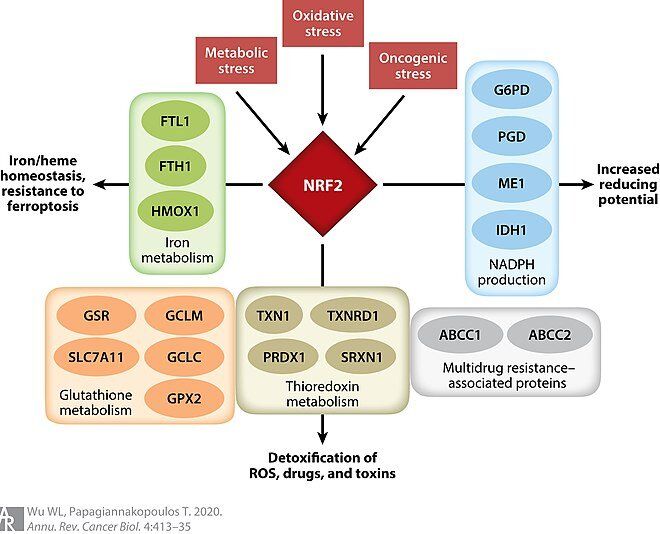
NRF2 is just one of thousands of critical proteins in the cell, but it is one that we now know a lot about. Once any molecule achieves a certain level of celebrity status, it tends to acquire a groupie following in the supplement market. Today, we have all manner of NRF enhancers, releasers, activators and synergizers ready to arrive on your doorstep at the click of a button. But what could any of these things possibly do for us, and how much is too much of a good thing?
At the risk of overstating the obvious, if a little extra NRF2 is good for every cell in your body, and every cell in your body is good, then NRF2 must be good for your body. The weak link in that argument, however, is that all cells are not good. Nobody wants harmful bacterial cells to flourish, and nobody wants cancer cells to flourish. A paper recently published in Nature now suggests that inhibiting NRF2 can block the migration and invasion of non-small-cell lung cancer cells through the body. If anyone is going to derive benefit from NRF2, they may need to be smart about it.
The main reason NRF2, or Nuclear factor-erythroid 2-related factor 2, is so highly sought, is because it is a key transcriptional regulator of several antioxidant and anti-inflammatory enzymes. Unfortunately, as the authors above have revealed, it also moonlights as an activator of the Rho-ROCK pathway, which promotes actin filamentation and movement of cells. The researchers were able to block this activity of NRF2 by giving an inhibitor known as brusatol.
A legally blind 78-year old man has regained his sight after being the inaugural patient to receive a promising new type of corneal implant, Israel Hayom has reported. Developed by a company called CorNeat, the KPro is the first implant that can be integrated directly into the eye wall to replace scarred or deformed corneas with no donor tissue. Immediately after the surgery, the patient was able to recognize family members and read numbers on an eye chart.
The corona is the clear layer that covers and protects the front portion of the eye. It can degenerate or scar for various reasons, including diseases like pseudophakic bullous keratopathy, kerotoconus and trauma.

Imagine going to a surgeon to have a diseased or injured organ switched out for a fully functional, laboratory-grown replacement. This remains science fiction and not reality because researchers today struggle to organize cells into the complex 3D arrangements that our bodies can master on their own.
There are two major hurdles to overcome on the road to laboratory-grown organs and tissues. The first is to use a biologically compatible 3D scaffold in which cells can grow. The second is to decorate that scaffold with biochemical messages in the correct configuration to trigger the formation of the desired organ or tissue.
In a major step toward transforming this hope into reality, researchers at the University of Washington have developed a technique to modify naturally occurring biological polymers with protein-based biochemical messages that affect cell behavior. Their approach, published the week of Jan. 18 in the Proceedings of the National Academy of Sciences, uses a near-infrared laser to trigger chemical adhesion of protein messages to a scaffold made from biological polymers such as collagen, a connective tissue found throughout our bodies.

Biologists balk at any talk of ‘goals’ or ‘intentions’ — but a bold new research agenda has put agency back on the table.
Animal immune systems depend on white blood cells called macrophages that devour and engulf invaders. The cells pursue with determination and gusto: under a microscope you can watch a blob-like macrophage chase a bacterium across the slide, switching course this way and that as its prey tries to escape through an obstacle course of red blood cells, before it finally catches the rogue microbe and gobbles it up.
But hang on: isn’t this an absurdly anthropomorphic way of describing a biological process? Single cells don’t have minds of their own – so surely they don’t have goals, determination, gusto? When we attribute aims and purposes to these primitive organisms, aren’t we just succumbing to an illusion?
Indeed, you might suspect this is a real-life version of a classic psychology experiment from 1944, which revealed the human impulse to attribute goals and narratives to what we see. When Fritz Heider and Marianne Simmel showed people a crudely animated movie featuring a circle and two triangles, most viewers constructed a melodramatic tale of pursuit and rescue – even though they were just observing abstract geometric shapes moving about in space.
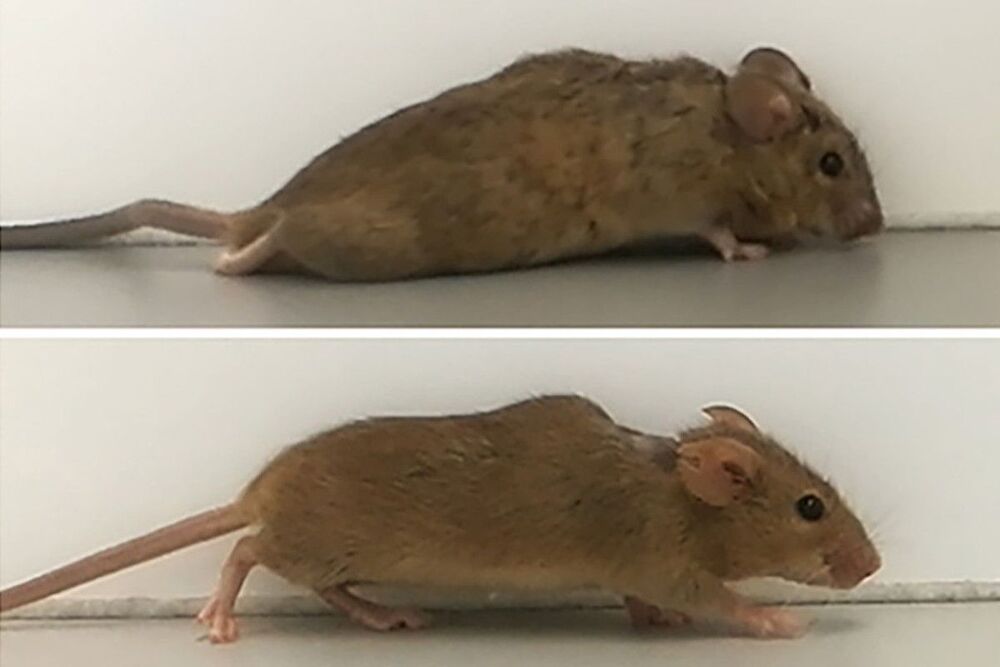
In a new study, German scientists have restored the ability to walk in mice that had been paralyzed after a complete spinal cord injury. The team created a “designer” signaling protein and injected it into the animals’ brains, stimulating their nerve cells to regenerate and share the recipe to make the protein.
Spinal cord injuries are among the most debilitating. Damaged nerve fibers (axons) may no longer be able to transmit signals between the brain and muscles, often resulting in paralysis to the lower limbs. Worse still, these axons cannot regenerate.
Previous studies have shown promise in restoring some limb function through spinal stimulation therapy, or by bypassing the injury site altogether. Other promising research in similar areas has involved using compounds that restore balance to the inhibitory/excitatory signals in the neurons of partially paralyzed mice, and transplanting regenerating nose nerve cells into the spines of injured dogs.
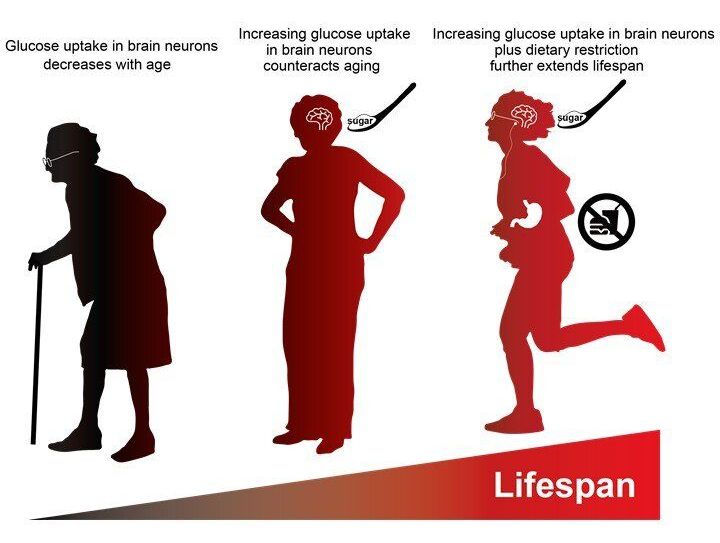
Researchers from Tokyo Metropolitan University have discovered that fruit flies with genetic modifications to enhance glucose uptake have significantly longer lifespans. Looking at the brain cells of aging flies, they found that better glucose uptake compensates for age-related deterioration in motor functions, and led to longer life. The effect was more pronounced when coupled with dietary restrictions. This suggests healthier eating plus improved glucose uptake in the brain might lead to enhanced lifespans.
The brain is a particularly power-hungry part of our bodies, consuming 20% of the oxygen we take in and 25% of the glucose. That’s why it’s so important that it can stay powered, using the glucose to produce adenosine triphosphate (ATP), the “energy courier” of the body. This chemical process, known as glycolysis, happens in both the intracellular fluid and a part of cells known as the mitochondria. But as we get older, our brain cells become less adept at making ATP, something that broadly correlates with less glucose availability. That might suggest that more food for more glucose might actually be a good thing. On the other hand, it is known that a healthier diet actually leads to longer life. Unraveling the mystery surrounding these two contradictory pieces of knowledge might lead to a better understanding of healthier, longer lifespans.
A team led by Associate Professor Kanae Ando studied this problem using Drosophila fruit flies. Firstly, they confirmed that brain cells in older flies tended to have lower levels of ATP, and lower uptake of glucose. They specifically tied this down to lower amounts of the enzymes needed for glycolysis. To counteract this effect, they genetically modified flies to produce more of a glucose-transporting protein called hGut3. Amazingly, this increase in glucose uptake was all that was required to significantly improve the amount of ATP in cells. More specifically, they found that more hGut3 led to less decrease in the production of the enzymes, counteracting the decline with age. Though this did not lead to an improvement in age-related damage to mitochondria, they also suffered less deterioration in locomotor functions.
